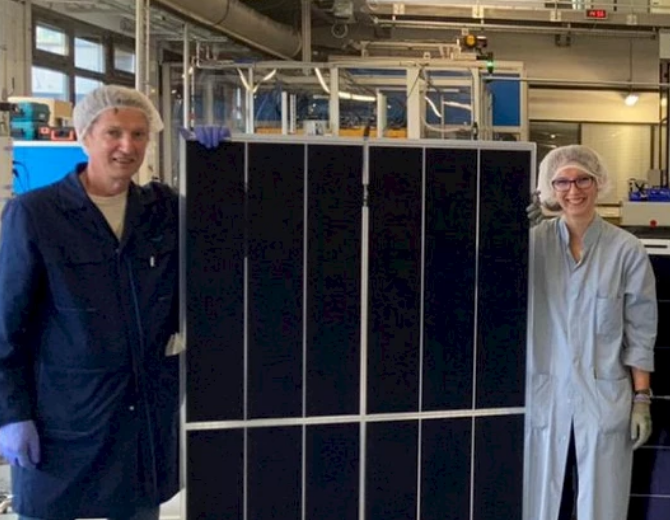Researchers at France's National Solar Energy Institute (INES) – an arm of the French Alternative Energies and Atomic Energy Commission (CEA) – have fabricated an M2-sized heterojunction solar panel for applications in building-integrated photovoltaics (BIPV).
Built with newly developed shingle interconnection technology, the panel has an average power of 315.64 W and a relative standard variation of 0.34%, which shows that the device has remarkable reproducibility for the manufacturing and characterization methods used.
The heterojunction cells were cut into six strips and the module was assembled without any metal ribbon welded to the cells or gaps between the cells, thus increasing its active surface.
When the module was equipped with a non-blocking UV encapsulant, it achieved an output of 322.64 W, which helped improve its power yield by around 2%.
“The average efficiency is 21.41% (active area) for modules with non-blocking UV encapsulant, and 20.95% for the others. On the total surface area, the module efficiency is 19.5%,” the French research group explained. “The module weighs 19.6kg, i.e. a surface weight of 11.8kg/m², a gain of about one third compared to a standard module (about 18kg/m²).”
Popular content
The research institute said the module is one of the top five most performant heterojunction solar modules, in terms of power density, with the champion panel achieving 214.15 W/m² and the average device 209.5 W/m².
The scientists tested different module architectures under IEC 61215 conditions to establish a reliable manufacturing process and bill of material. “A first semi-industrial manufacturing campaign has just been completed and resulted in the production of 10 shingled HJT modules, of approximately 320 W, for an equivalent size of 60 cells, designed to meet the needs of building applied PV (BAPV) applications, in terms of weight reduction, high area performance, and aesthetics,” they concluded.
CEA-INES and Enel Green Power, the renewables unit of Italian utility Enel, achieved, in August 2020, an efficiency of 25.0% for a heterojunction solar cell with an active surface of 213cm2, based on the M2 silicon wafer format. The French research institute had also achieved 24.25% peak efficiency for a silicon heterojunction solar cell in December 2019.
This content is protected by copyright and may not be reused. If you want to cooperate with us and would like to reuse some of our content, please contact: editors@pv-magazine.com.



By submitting this form you agree to pv magazine using your data for the purposes of publishing your comment.
Your personal data will only be disclosed or otherwise transmitted to third parties for the purposes of spam filtering or if this is necessary for technical maintenance of the website. Any other transfer to third parties will not take place unless this is justified on the basis of applicable data protection regulations or if pv magazine is legally obliged to do so.
You may revoke this consent at any time with effect for the future, in which case your personal data will be deleted immediately. Otherwise, your data will be deleted if pv magazine has processed your request or the purpose of data storage is fulfilled.
Further information on data privacy can be found in our Data Protection Policy.